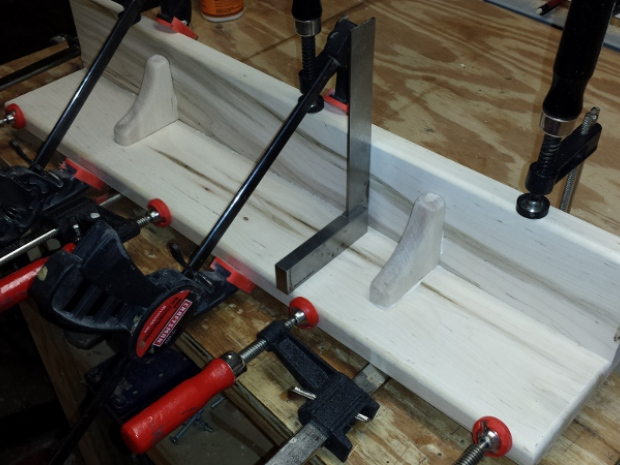With all the pieces sized, I started working on the joinery, starting with the dados for the brackets. The dados on the top and back boards, must line up with each other, so care was taken with layout for these. The dados are 3/8″ wide, cut with a 3/8” straight bit on the router. To help line up and keep the dados straight, I used a shop made T-square jig. Using a couple sharp chisels, I square the ends of the dados. A 3/4” wide x 3/8” deep rabbet is made on the top piece to accept the back. This is done on the table saw with a dado stack, with an auxiliary fence. The brackets need a couple tongues that will fit into the dados. I did this on the router table with a 3/8″ rabbeting bit. Please take care with these small pieces, and use a small parts jig on the router table, otherwise your fingers will get too close to the spinning bit. I trimmed the front of the tongues so that they would fit in their dados using the band saw, and a chisel to clean up the cuts. I then checked everything for fit, and made adjustments as needed.

















